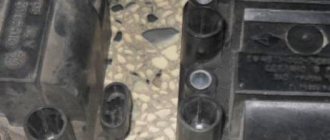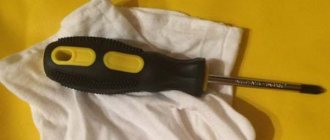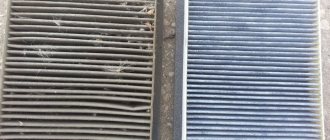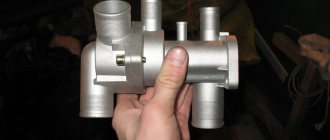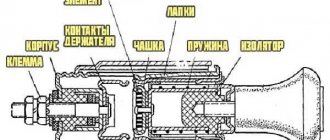It's time to replace the cabin air filter. Besides, it has never changed yet. There are several types of filters. Some by year of release: before and after September 2003; others if the car has air conditioning. Therefore, when you buy, you need to know what year the car is and even the month. Since my car is 2012, the filter is a new model. A TS 2111 SU carbon filter from TC FILTER was purchased at the store. This filter cleans the air better, lasts longer, but is somewhat more expensive.
This is the box:
The filter inside the box is also in the bag:
The filter itself is very dense and feels made with high quality:
To replace the cabin filter on the 10th family, you need to unscrew 10 screws and 4 nuts. Let's begin...
We take out 4 plastic plugs on the frill and unscrew the screws. We also remove the rubber seal and unscrew the 6 screws on the hood noise:
It is also necessary to unscrew one nut (with a 10mm wrench) on each side:
Then we take out two more plugs in the wipers and unscrew the nut holding it with a 13″ head:
It is more convenient to remove the wipers with the hood lid lowered. We move them away from the glass and, swaying in different directions, remove them from the slots.
The hose that goes to the washer nozzles does not allow you to completely remove the frill. So we just move it to the side.
To remove the filter you need to unscrew 4 screws:
And here is the filter itself:
As you can see, it is in a deplorable state and has been asking for a replacement for a long time:
Even despite this condition, the stove does not stink and the windows do not sweat.
As you can see in the previous photos, the anti-corrosion coating in the corners was very frayed and mixed with dirt, and in some places even washed off. It was decided to update it. We wash off the old with white spirit and prepare the surface. I will apply the new Movil with a spray can and to prevent it from getting into the wrong places, we protect the glass, doors and fender with newspaper and masking tape.
Tips to help car owners cope with the most common problems in winter.
We remind you how to deal with common winter problems: foggy windows, trouble starting, frozen windows/doors and locks.
Most even modern engines need to be warmed up. But only older cars need to be warmed up for a very long time before setting off.
If the car key has an electronic board, then you cannot heat the key with a lighter.
Snow or dirt stuck to the wheel affects its balance
The lower the air temperature, the more viscous (thick) the engine oil becomes. As a result, when starting, a cold engine experiences increased resistance. That is why until the engine warms up, the car consumes the maximum amount of fuel. But frozen oil also affects the operation of the car’s battery, which needs a lot of energy to turn the starter. But there is a problem: the lower the temperature outside, the faster the battery loses its charge.
It is not surprising that the most common problem faced by thousands of motorists in winter is battery drain. All this leads to the fact that many car owners cannot start the engine. By the way, the problem with starting the engine is not always associated with a discharged battery
So if your car won't start in cold weather, it's important to diagnose the real problem. Naturally, if it’s all about the battery, it’s enough to charge it or buy a new one if, for example, the battery has lasted for more than 4-5 winters
It’s easier to buy a new one than to constantly suffer from engine failure.
Another typical winter problem is reduced visibility due to fogging of the windows inside the car and icing outside. Interestingly, both problems are most annoying when the temperature hovers around freezing, or slightly below zero.
But did you know that windows can also fog up from the outside when there is steady frost outside and the temperature does not fluctuate? In this case, the heat in the car can have the opposite effect, that is, the windows will fog up on the street side.
In addition to reducing visibility, foggy windows can make driving dangerous and uncomfortable.
Many problems arise with warming up the engine when the car is idle. Some recommend not warming up the car, but immediately starting driving at low speeds to speed up the warming up of the power unit. Others advise heating for as long as possible. So who is right? Probably, as always happens in our world, the truth is somewhere in the middle. Yes, you definitely need to warm up the car.
But in moderation. Again, it all depends on the distances you travel. For example, if your trips are mostly short, then it is better to warm up the car longer, otherwise it will not have time to warm up. If you drive long distances every day, then there is no point in warming up the car for a long time - you will do it along the way. And, of course, it all depends on the temperature. Naturally, when the street is below -15-20 degrees, it is better to warm up the car well.
But did you know that the most common problems can be prevented? For example, in order to minimize the risk of glass fogging, you need to change the cabin air filter on time. Also, car windows should always be cleaned and degreased. In particular, do not forget to turn on the air conditioner when excess moisture forms, which, of course, will not cool at negative temperatures outside. But nevertheless, it will perform an important function in the car to remove excess moisture from the interior.
Also, take care of winter engine oil in advance, which is more intended for operating the engine in winter. Check the battery in advance and carry out preventive maintenance by adding water and electrolyte if necessary. In general, in order not to get a headache in winter, you must remember that the sled needs to be prepared in the summer.
To make it easier for you to learn how to solve the main problems with your car in winter, we have collected for you answers to the most frequently asked questions from car owners:
Why is this happening?
The main source of this problem in a car is moisture. Moreover, it can happen not only in wet weather. In combination with cold glass, moisture produces condensation. As a result, small drops of water form on the inside surface of the window and windshield. Of course, this negatively affects visibility and, as a result, traffic safety.
Often, excess moisture is removed from the interior by turning on the heater or blowing on the windshield. But this does not always give the desired result. Condensation still forms on the windows. If your car windows sweat, there may be different reasons. Let's look at ways to solve this problem.
Why does the windshield constantly sweat from the inside: the main reasons
The windows in the car fog up from the inside due to the fact that the temperature in the cabin exceeds the outside temperature. As a result, the moisture contained in the cabin condenses on the glass. If the air humidity is high, then the windows cease to be transparent at all. This is why the inside of the windshield fogs up especially heavily when it rains (although this can happen in dry weather).
WATCH THE VIDEO
From all of the above, it follows that in order to eliminate condensation in the car interior, it is necessary to minimize the moisture content in the air. Its amount may be increased for several main reasons:
- Water on rugs or damp shoes
- Large number of passengers (breathing releases a lot of water)
- Wet interior
Most often, the windows in the car's interior sweat because of this. The recommendations in this case are simple: you need to take care of your shoes and cleanliness in the car, and also, in case of fogging, wipe the windows. In addition, before accepting passengers, you should warm up the car. However, there are other reasons why car windows sweat.
The cabin air filter is dirty
- Google+
- LJ
- Blogger
Foggy glass may be a sign that the air filter needs to be replaced. If it is dirty, moisture simply cannot escape from the car. In addition, air pollution appears in the cabin, and when the ventilation is turned on, no air flow is felt. Experts recommend not to wait for such consequences, but to replace the element every 10,000-20,000 km.
Problems with climate control
Due to a clogged drain hole, the moisture content in the cabin increases. This is what causes the car windows to sweat. All that needs to be done in this case is to clean the system.
Water entering the cabin
Moisture can enter the car not only through the doors, but also through the ventilation. All cars have drainage holes under the hood. If they become clogged, water will accumulate and enter the ventilation system. Because of this, the windshield sweats from the inside.
Wet sound insulation
Materials used for sound insulation in cars can absorb water well. This is especially common after driving through puddles or in rainy weather. To prevent the windows from sweating in the car, it is necessary to dry the material.
What to do if the glass sweats when the air conditioner is running
Quite often, motorists experience windows fogging up when the air conditioner is running for a long time. In this case, moisture forms outside. In fact, this process is normal (again, there is a large temperature difference). Therefore, there is no need to worry in this case.
Useful tips
To get rid of condensation on the windows as much as possible, ventilate the car interior once a year. It is better to do this on a dry sunny day. Open the doors and trunk of the car completely for a day. Excess moisture will evaporate even from the most hidden places. After thoroughly drying the interior, you will no longer wonder why the windows in your car sweat.
If the problem of foggy windows has already overtaken you, you need to know how to properly remove moisture from the surface. Many have encountered the situation: if you remove water from the inside of the glass, the next day there will be strong stains. It will not be possible to remove them with air conditioning or a strong air flow. But this problem can be fixed. Experts recommend using microfiber cloths. Their appearance is presented below.
They efficiently remove moisture from the surface without leaving streaks. For the best effect, it is recommended to wipe the glass diagonally. This way you will always have clean, streak-free glass.
How to remove condensation
After condensation appears, many motorists immediately turn on the heater or open a window. These methods do work, but they may not be enough. If visibility does not improve, you need to wipe the windows diagonally (this leaves fewer streaks) with a clean cloth or napkin.
Anti-fog chemicals
- Google+
- LJ
- Blogger
You can find products on sale that help get rid of condensation. They can be in the form of a liquid or mastic, and are used both on the inside and outside of glass. The anti-fog agent must be applied to a dry surface and rubbed. After this, a transparent film will appear on the window, repelling water. In winter, you can use anti-ice products.
You can also make your own windshield defogger. To do this, you will need to mix glycerin with alcohol, and then apply the mixture to the window.



